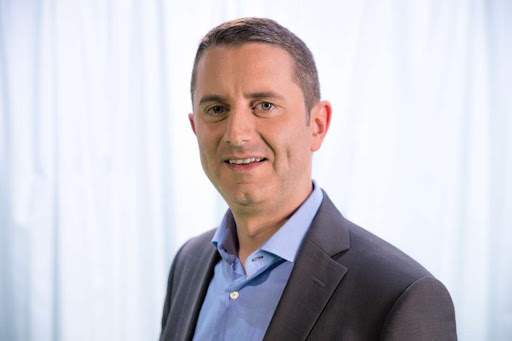
What nonsense have I heard about shared governance and other liberated companies: from the representation of chaos to the cult ritual, fifty shades of prejudice. So yes, all the “traditional” companies that I take to visit next-generation enterprises in France or abroad get “a slap in the face”. No, hierarchies have not disappeared, nor have the leaders who used to be managers, nor the rules and even less the processes. I happen to participate in the strategic deliberations of the association “France Processus”, and if it is true that this wording does not necessarily make one dream anymore, its subject is nevertheless at the heart of the collective performance of organizations.
A recent conversation with Susanne Aebischer, the expert with whom I co-founded The NextGen Enterprise Summit, has caused me to formalize things a bit.
Like her, I am deeply convinced that there is (or should be) a structural link between governance and processes. “Structure follows process, which follows strategy, which follows purpose,” says Susanne. In other words, everything always starts with the purpose of the organization on which the strategy is based, and a prioritization of objectives and actions to achieve that purpose. In this context, it becomes possible to define value creation processes by asking the following question: which business processes are designed to achieve the purpose? As we can see, the structure – the organizational design – comes last.
And this variation works for the whole organization or just a part of it.
Locally, the purpose of my entity contributes to the strategy and to the global purpose. The business and support processes contribute to the local and global purposes.
The organization exists to create product or service value. The structure is, or at least should be, driven by the processes. The organizational alignment of the actors in the processes that create value appears critical to achieving a good level of performance. Continuous improvement and coordination allow the actors in a process to work more fluidly on a daily basis.
If, for example, the organization is structured by customer segments, it becomes interesting to associate several skills to orchestrate the service to be provided to the customer. This thought process requires upstream work.
When the company already exists, mapping the key processes using the Kaizen method allows us to understand what would be the most efficient human organization. Using the Holacracy or Sociocracy approach, we often start by modeling the circles from the existing structure, but this approach does not allow the adaptation of the structure to the processes. Existing structures usually lend themselves to profound optimizations.
The kaizen mapping process will, for example, allow the realization that some people are in the same team yet it has been a while that things shouldn’t be that way.
Different stakeholders may understand a process in different ways. By “mapping” the process, we can identify potential bottlenecks and dysfunctions. This concrete analysis, involving the parties involved in the process, allows us to optimize the process itself as well as to understand and review the roles of those who could or already do undertake it, and with what responsibilities and accountabilities.
To summarize, what can we learn from experience?
First of all, that the first question to ask ourselves could be: does this process serve its purpose?
Indeed, the more an organization grows, the greater the risk of losing meaning. This often results in a weak link between purpose, strategy, processes and structure.
Secondly, that organizational entities and their levels of interdependence must be derived from value creation and therefore from business processes. As for the support functions, they may either be integrated into the circles crossed by the process or may well be centralized.
Finally, that the adaptation of a process through an exercise in collective intelligence enables the actions necessary for its transformation to be anticipated.
Clarity regarding roles, rather than job descriptions, will also make the efficiency of processes less sensitive to changes in the teams.
However, as any experienced manager knows, even if a process is a prerequisite for a given structure, to be successful it is necessary to bring the right people together and ensure their collective alignment.
The cultural issue therefore appears to be the keystone of the managerial edifice and of the proper functioning of an organization, towards its purpose. The beliefs at work in the organization contribute to shaping the culture and values, from which stem the principles of collaboration – for example, trust rather than control – and finally behaviors. Governance is the organizational counterpart to human beliefs and behaviors.
Aligning human behaviors and governance is therefore not an option!

| Cookie | Duration | Description |
|---|---|---|
| cookielawinfo-checkbox-analytics | 11 months | This cookie is set by GDPR Cookie Consent plugin. The cookie is used to store the user consent for the cookies in the category "Analytics". |
| cookielawinfo-checkbox-functional | 11 months | The cookie is set by GDPR cookie consent to record the user consent for the cookies in the category "Functional". |
| cookielawinfo-checkbox-necessary | 11 months | This cookie is set by GDPR Cookie Consent plugin. The cookies is used to store the user consent for the cookies in the category "Necessary". |
| cookielawinfo-checkbox-others | 11 months | This cookie is set by GDPR Cookie Consent plugin. The cookie is used to store the user consent for the cookies in the category "Other. |
| cookielawinfo-checkbox-performance | 11 months | This cookie is set by GDPR Cookie Consent plugin. The cookie is used to store the user consent for the cookies in the category "Performance". |
| viewed_cookie_policy | 11 months | The cookie is set by the GDPR Cookie Consent plugin and is used to store whether or not user has consented to the use of cookies. It does not store any personal data. |